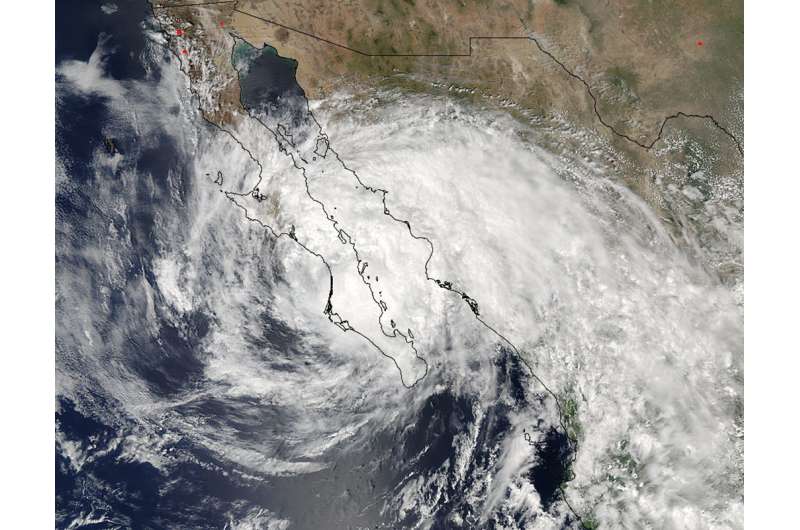Suomi NPP satellite spots Lidia dissipating

NASA-NOAA's Suomi NPP satellite captured an image of Lidia as it degenerated into a remnant low pressure area on Sept. 2.
On Sept. 2 the Visible Infrared Imaging Radiometer Suite (VIIRS) instrument aboard Suomi NPP satellite captured a visible image of Lidia. When Suomi NPP passed over, it had been hours since Lidia had produced any deep convection. Lidia continued not to produce strong thunderstorms and deep convection for 12 to 15 hours, and it was then that the National Hurricane Center noted it was no longer a tropical cyclone and had degenerated into a remnant low pressure area.
The National Hurricane Center issued their final advisory on Lidia at 5 a.m. EDT (2 a.m. PDT/0900 UTC) on Sept. 2. At that time Lidia was centered about 40 miles (65 km) southwest of Punta Baja, Mexico, near 29.6 degrees north latitude and 116.3 degrees west longitude.
At the time, Lidia's maximum sustained winds were near 35 mph (55 kph) with higher gusts.
Weakening is forecast, and Lidia was expected to dissipate by Monday night, Sept. 5.
At 5 a.m. EDT (0900 UTC) on Sunday, September 3, 2017, Post-tropical cyclone Lidia's center was located near 29.6 degrees north latitude and 116.3 degrees west longitude.
High pressure over the southwestern United States was steering the remnant low toward the west-northwest and this motion continued as the circulation dissipated off the coast of southern California.
Provided by NASA's Goddard Space Flight Center



















